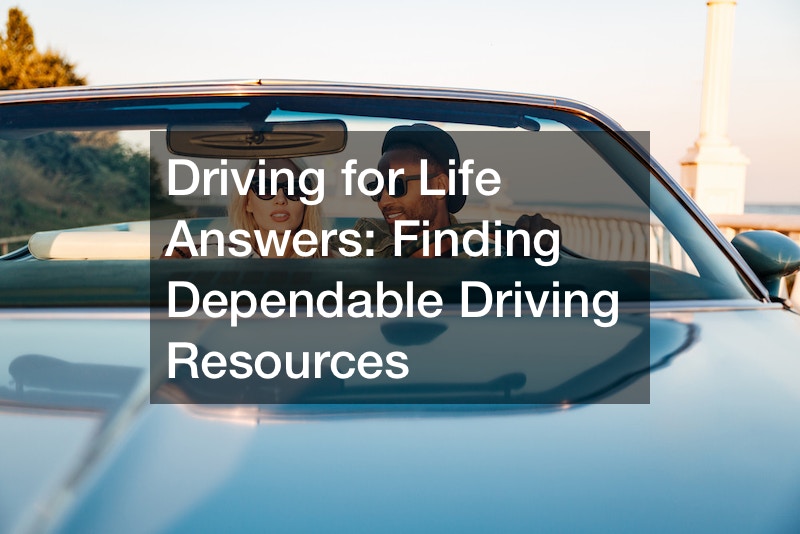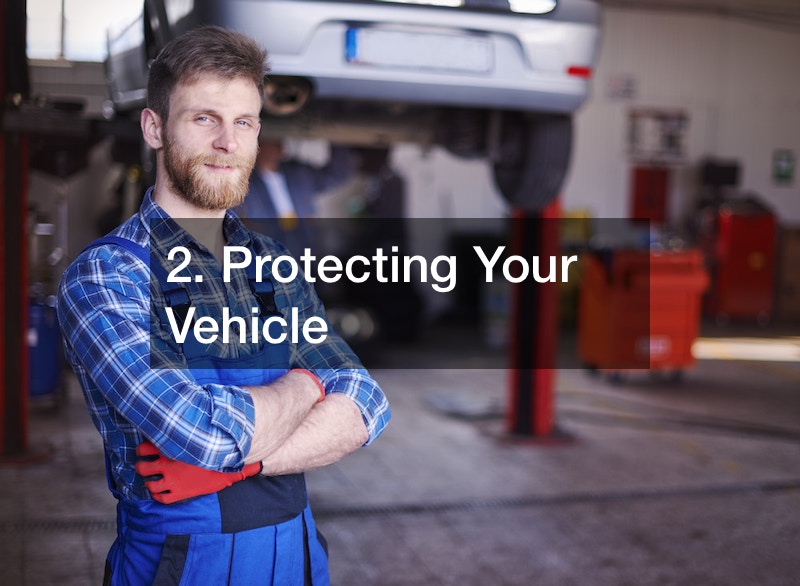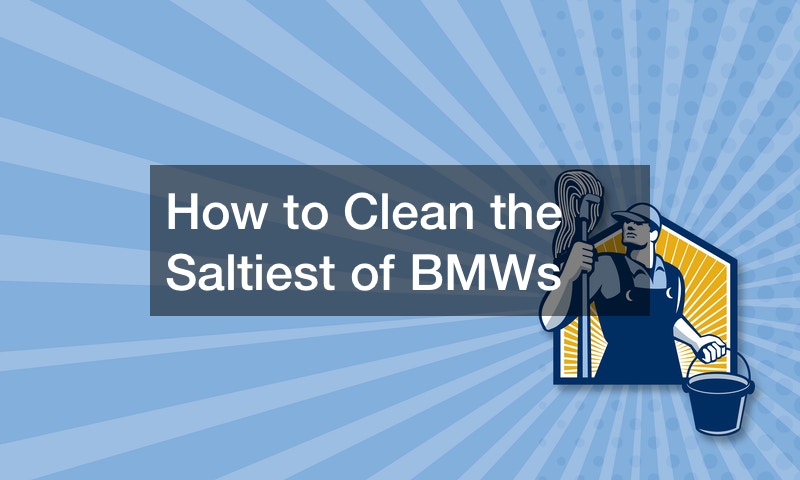
Driving for Life Answers Finding Dependable Driving Resources

According to a press release from the National Highway Traffic Safety Administration (NHTSA), 38,824 people lost their lives to traffic crashes n 2020. As a driver, you can play your role in preventing these accidents by following best practices. Find out how finding dependable resources while driving for life answers can help you as a driver.
1. Finding the Right Coverage
One of the resources you need to find while driving for life answers is the right insurance coverage. Almost every state requires you to have motor insurance. However, you don’t have to stop after you receive the bare minimum coverage. Do you know you could get an insurance discount by taking defensive driving classes? According to Progressive, auto insurance agents can add a discount for a few years.
When looking for the right coverage, assess your needs. What level of coverage will be enough? You may find that you need higher coverage because you travel long distances. It’s also recommendable to consider the implications of an accident. Can your current policy cover your medical and property damage costs?
It’s also best to compare quotes from different insurers. Motor insurance policies are quite competitive. If you look hard enough, you’ll likely find one that you and your wallet love. A good tip is not to go for the cheapest, but for one that has the best value for money.
Look for reviews and social proof about the insurer. Do they have a good rating? How responsive are they to your concerns? If unsure of any policy aspect, it’s best to clarify it now rather than later.
2. Protecting Your Vehicle

Some resources to search for while driving for life answers are the ones that can protect your vehicle. Owning a car is an investment that’ll cost you. According to an AAA survey, the average cost of car ownership is $9282 annually. Luckily, you can protect your car without breaking the bank. You can start by scheduling regular maintenance according to the manufacturer’s guidelines.
Protecting your vehicle doesn’t stop at the auto shop, as there are tasks you can complete at home as well. Do you have a safe, climate-controlled space for your car? Consider a garage door replacement if your current one is weak or worn out. Remember that even with good painting, your car can start rusting if exposed to harsh weather. If you don’t have a garage, wax your car and buy a cover.
Be kind to your car and know its limits. For example, don’t go overboard with the weights or take your vehicle to rough terrain. It may be helpful to learn defensive driving because it’ll help you avoid accidents. It would help if you got the damages repaired as soon as possible. The more you delay an issue, the more it’ll cost you.
3. Preventing Problems at Home
Sometimes, people perceive roads as the most dangerous place a car or driver can be. Yet problems can arise right at home. According to Consumer Notice, there are 19 vehicle fires per hour in the United States and only 5% are caused by collisions. Keeping your vehicle in good working mode to prevent fires. If you’re leaving your vehicle at home, use a fuel stabilizer to keep it from breaking down and causing problems.
Driving for life answers include simple but effective actions such as checking fluids. When was the last time you changed the coolant? Remove the battery if you plan on storing your vehicle for a long time to protect it from rusting and other damage. Is your garage or home environment humid? Try using a de-humidifier so mold and mildew don’t grow.
Apart from the interior, upgrade your exterior to protect your car. Getting a paving contractor to fix potholes could be the protection your car needs. Extended storage can cause flat spots on your tires. So, keeping the tires inflated even when storing them is best. Besides, a regular check-up can help you notice problems before they grow.
4. When on the Road
Did you know that speeding causes a third of all motor crashes, according to NHTSA? Yet watching your speed is only one of the driving for life answers you need to keep safe while on the road. Sometimes people look at traffic demeanors as rites of passage. Yet observing basic traffic laws can be the difference between life and death. Remember always to buckle up even when no one’s watching for your safety.
You should never drive after a drink. Some people get away with driving under the influence, but they’re only lucky. For your safety and others’ safety, only drive when sober. When on the road, avoid any distractions as distracted driving can cause death and significant injuries.
Preparing for your road experience is essential even if you’re heading to work 15 mins away. Ensure you have enough fuel and your car is well-maintained. Research if there’s an electric vehicle charging station along your intended route. Once on the road, give other drivers a safe distance. Bumper-to-bumper accidents often happen because vehicles are moving too fast.
5. Receiving Emergency Assistance

Nobody hopes for emergencies, yet road emergencies are so common-every driver will likely have at least one in their driving lifetime. The best strategy is to have a plan. The most obvious one is to keep a first aid kit. According to a report from Reuters, medical responders take, on average, 8 minutes to arrive. A prepared driver might be the best roadside assistance an accident victim can have.
If an incident has occurred, call 911. They’ll have professionals suited for such incidents. If you’re providing help to others, it’s best to be calm by taking deep breaths and focusing.
When you’re the one involved in the emergency, keep it visible. Use flashlights, flares, or any detectable elements to receive help. Having an emergency kit will provide what you need as you wait. For example, you may have high-energy snacks to keep you warm in the cold season.
Part of planning for emergencies is getting a paid membership to a company that offers roadside assistance. For example, you can have a towing company on speed dial if you need such services. If an emergency operator is giving you directions, follow them as best you can. Such professionals have dealt with similar cases to gain more insight.
6. Specialty Roadside Assistance
One of the other related driving for life answers is researching specialty roadside help. Semi roadside assistance differs based on need. You can have battery replacement, fuel delivery, or towing services. If you take a place, learn what it covers exactly and any limitations. Please remember to keep the number so you can use it when a situation arises.
You may rarely have a flat tire, but when it happens, it could interfere with your day. Most people opt not to use their roadside help coverage despite having one. According to a survey commissioned by Agero, 80% of drivers have a roadside assistance plan but only 33% use their coverage. Next time you have a flat tire or a battery that needs replacement, call your cover provider for help.
You can receive specialty road assistance even when at home. When on the road, ensure you keep yourself and your car safe by moving your car to a safe location, putting on your hazard lights, and locking the doors. Sometimes the services may take longer than you expected, so be patient. It’s recommended to have a backup plan in case the specialty services can’t help or are unavailable. If they show up, let them notify you about the estimated time for their services.
7. Replacing Necessary Pieces of Your Vehicle

Getting suitable replacement parts is one of the forgotten driving for life answers. According to a survey by CarMD, the most common vehicle repairs revolve around three parts, the ignition coils, catalytic converters, and check engine lights. Regarding vehicle replacements, it’s best not to prioritize saving over quality. Poor quality parts can end up impacting your vehicle and your safety.
The most basic start is regular maintenance, so you don’t have to replace parts too often. However, if you must replace it, follow the manufacturer’s guidelines or hire a professional to complete the work. Your warranty could be affected if a poor-quality car part damages your car. Aftermarket parts may not meet the quality standards. Remember that high-quality parts are the best strategy for ensuring your safety.
Monitoring your vehicle for unusual sounds and vibrations is also essential. They can be telltale for what repairs to make. Every time you get a part repaired, record it. For example, keep a record when you do tire replacements for future reference. Good records may help with future maintenance or if you choose to resell your vehicle.
8. Equipment for Specialty Vehicles
If you’re looking for driving for life answers for specialty drivers, don’t skip equipment. Equipment can have a significant impact on the functionality of a vehicle. It would help if you had full awareness of your vehicle equipment needs. That’ll help when researching for items such as a golf cart cargo box.
Once you have bought the equipment, you must install it properly. Being safe with a professional is better than attempting a faulty DIY job. However, if you’re confident you can do the job, follow the instructions to the last dot. Before using the equipment, test it to ensure it’s able to optimally function.
Once installed, do regular care and maintenance to extend the lifespan of the equipment and avoid having to replace it in the near future. Do frequent inspections for signs of damage, such as rust or lose bolts. By regular cleaning, you can protect the equipment from dust build-up and corrosion. It’s also recommendable to lubricate all the moving parts to prevent malfunctioning.
9. The Proper Representation

Accidents happen even when you have the best driving for life answers and they’re often costly. You should know your rights if you have been involved in a road incident. You can check on reputable legal websites or consult with your attorney. What are your legal options? It’s also recommendable to keep documented evidence from the crash, so if you’re able to move after an accident take the time to take photos and record the information from the drivers involved.
You may also have to deal with insurance. Use the evidence you collected to file a claim immediately. The more you wait, the more challenging it might be to collect on your policy. Some insurance companies don’t always have your best interests at heart. You may need an insurance attorney’s help to cash in on your insurance and deal with issues that may arise during the process.
If you’re on the other side of the law, you should look for the best DUI attorney. Ensure they have the legal expertise to handle your specific case. Be sure to talk to your lawyer about costs early so you’re not surprised when the legal process begins.
10. When Your Vehicle is Beyond Repair
Sometimes, even with the best practices, a vehicle is beyond repair. It would be best to have driving for life answers for when a car is beyond repair. You can begin by inspecting the extent of the damage. You can sell it as salvage parts. For example, a scrap metal recycling company can pay you for all the metals in the car.
As you have learned, finding dependable driving resources is critical for a safe driving experience. There are tools for every aspect of your vehicle. Above all, remember that human behavior is behind most safety issues on the road and at home. Always do your best to protect yourself and others by maintaining your car and driving safely.


